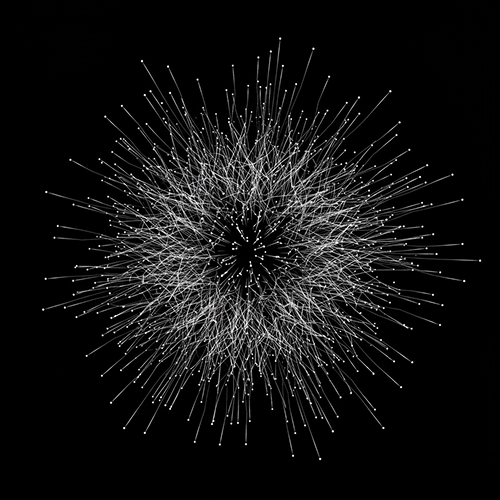
Get better ideas, faster.
Our Divergence Engine was created to help your team come up with out-of-the-box ideas, in a fraction of the time and the cost.

Seenapse generates more original ideas than ChatGPT and the rest
How do we know this? We applied a classical test of divergent thinking, called Consequences Test, and measured the output using the Open Creativity Scoring with AI tool (Ocsai).
Using the same prompt in Seenapse, ChatGPT, Gemini, and Claude, Seenapse comes on top. Read more here.

Works non-linearly, like you do
Instead of working in a single conversational flow, Seenapse allows your team to branch to their heart's content, collaboratively, without limits.
You call the shots
01
Decide which ideas are worth pursuing
02
Engage in projects from your different teams
03
Everything you co-create with Seenapse is yours
04
All your data (and your client's data) is safe and we never use it to train our models
Inspiring teams at







Some happy customers
Your questions, answered
What makes Seenapse different from ChatGPT and other AI tools?
Seenapse was built specifically for how creatives work. Unlike general-purpose chatbots like ChatGPT, which require you to pretend they are creative tools (e.g., saying, You are an award-winning advertising creative), Seenapse is designed to generate ideas naturally and effectively for creative professionals. Seenapse works non-linearly, allowing you to explore multiple paths before committing to one—unlike the single-threaded conversations typical of other tools. It also overcomes the limitations of large language models (LLMs)—the technology behind ChatGPT and similar tools—that often default to the obvious, popular, or average. Seenapse’s proprietary Divergence Engine ensures you generate truly original and unexpected ideas. Seenapse understands creatives, so you don’t need to be a “prompt engineer” to use it effectively (see below).
Do I have to learn how to make prompts to get the best out of Seenapse?
No. You can communicate with Seenapse just as you would with a colleague. It’s easy and straightforward.
Who owns the ideas and images that Seenapse generates?
You do. You’re free to use them however you like. While we encourage users to treat these as starting points and transform them further, you’re welcome to use them as-is if you prefer.
Are the research results from Seenapse trustworthy?
Research results are sourced from the web and include references to relevant content. While they are generally well-sourced, we provide citations so you can verify the findings yourself.
How can I ensure that what I generate with Seenapse won’t cause legal issues?
We recommend vetting all ideas and images you decide to use, just as you would in your traditional creative process. Make sure your final outputs comply with copyright laws and other regulations, which may vary by jurisdiction.
Is Seenapse copying existing ideas from the internet?
No. Seenapse generates ideas much like people do—by connecting related or loosely related concepts in novel ways. While it’s possible for Seenapse to arrive at ideas similar to existing ones, this happens in the same way it might during a human brainstorming session.
Is my data safe?
Yes. All your data is encrypted during transit and storage. When you delete boards or your account, we ensure no data is retained.
Does Seenapse use my data to train its models?
No, we never use your data for training purposes.
Still have a question?
If you have any questions or would like to learn more about Seenapse, please reach out to us.
Plans and pricing
Most Popular
Small teams
50€
/person/month
What you get:
- Up to 20 users
- Unlimited prompts
- Unlimited projects
- Shared projects
Business
empty
empty
What you get:
- For larger teams
- Lowest per-prompt price
- Unlimited projects
- Shared projects
- Custom functionality & integrations
From our blog





I use Seenapse almost daily to boost my creativity, and the best part is that I don't have to explain what a creative rationale, a concept, or a post is because it already understands everything. It's almost like chatting and creating together with another high-level Creative.
Cassandre Aouragh
Creative Director, Montalvo
I love your tool! Robust, reliable, creative! Tempted to keep it a secret —it's that good— but everyone deserves to know.
Jamie King
Cofounder, Rockstar Games.
It's awesome! Besides you guys have a look and feel that is playful and really have worked around to go beyond the 'expected' ideas on a normal brainstorming.
Catalina Triana
Founder, EngageBox
It's an incredible asset for fueling brainstorming sessions and actively involving 'unconventional creatives' in the ideation process, empowering them to play a pivotal role.
Gilad Kat
Founder, Blue Oyster by The Network